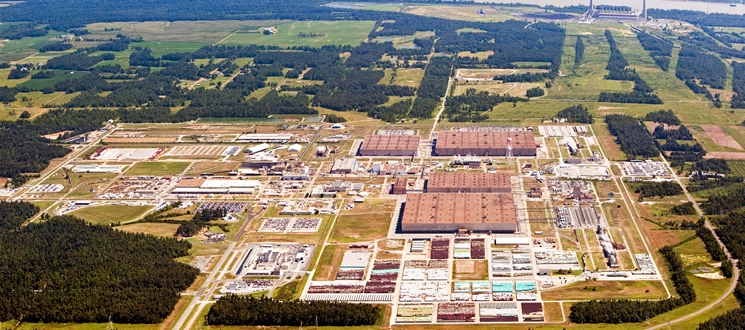Portsmouth Gaseous Diffusion Plant
 |
| Location | Special Exposure Cohort Employees (SEC): |
| Piketon, Ohio | Before February 1, 1992 |
Portsmouth Eligibility |
| EEOICPA Compensation is more likely to be awarded to former Portsmouth Gaseous Diffusion Employee’s if they worked during the SEC Period. Portsmouth’s SEC Period is before February 1, 1992. Compensation is typically awarded to employees who worked for at least 250 days and later developed one of the following 22 specified cancers.
Workers whose employment occurred outside of the SEC class period can still file a claim for benefits under Part B or Part E of the EEOICPA. For more information on filing an EEOICPA Claim, contact our firm. You can call us at (513) 651-3700 or toll-free at (877) 450-8665. |
About Portsmouth
The U.S. began construction of Portsmouth in 1952 in order to expand the nation’s gaseous diffusion program. The gaseous diffusion plants already operating in Oak Ridge, TN and Paducah, KY were not able to fulfill the nation’s need for highly enriched and low-enriched uranium. Portsmouth was used for isotope separation. Beginning in 1954, Portsmouth produced highly enriched uranium to support nuclear weapons production and, later, for use by submarine, research, and test reactors. The high-enrichment portion of the diffusion cascade was shut down in 1991.
On July 1, 1993, the United States Enrichment Corporation (USEC)*, a government-owned corporation formed under the Energy Policy Act of 1992, assumed control of the plant’s production activities. USEC, which was fully privatized in 1998, continued to produce enriched uranium for commercial use at this location until May 11, 2001 when production ceased based on a USEC business decision. USEC currently maintains the Portsmouth plant in a cold standby mode, under a contract with the Department of Energy. The Department of Energy maintains responsibility for addressing the environmental legacy left by historic plant operations. It should also be noted that the area currently under control of DOE’s Office of Environmental Management excludes that area of the plant which is leased to USEC.
Throughout the course of its operations, the potential for beryllium exposure existed at this site.

